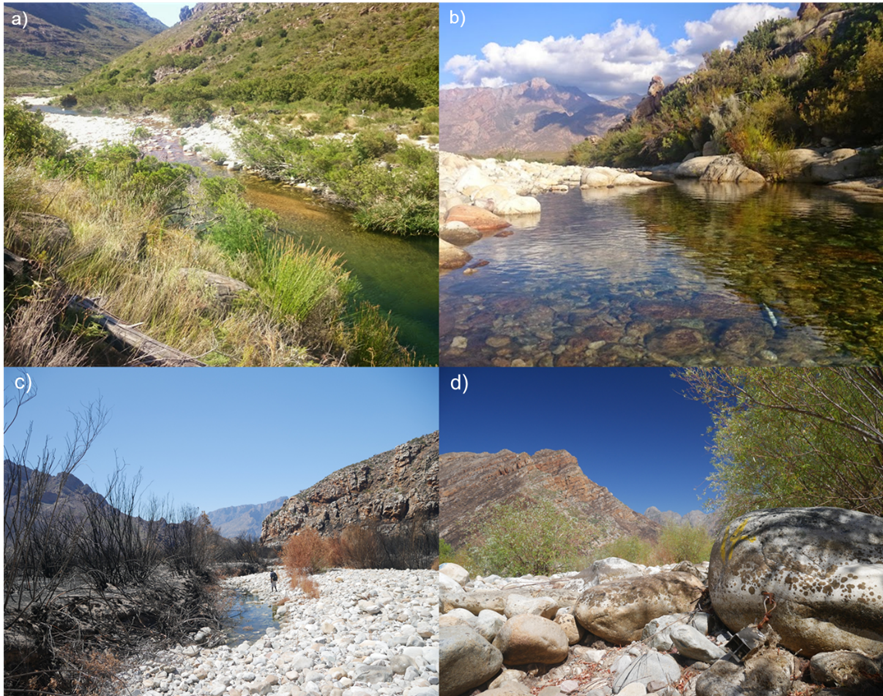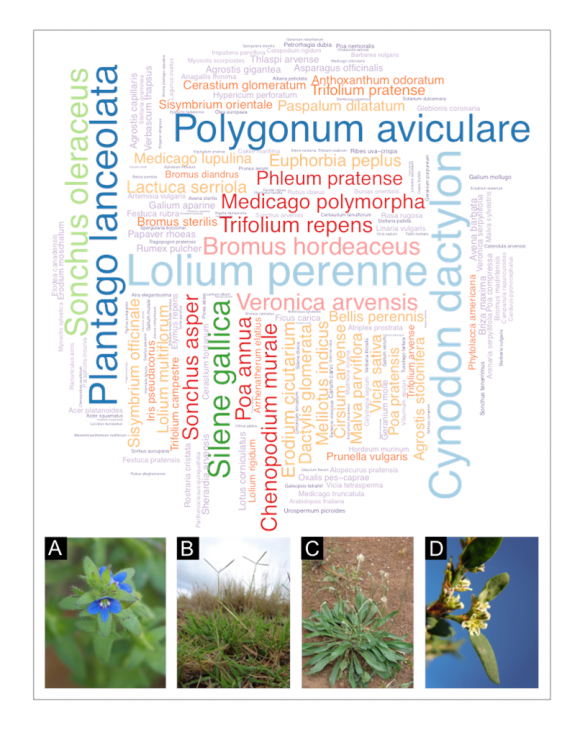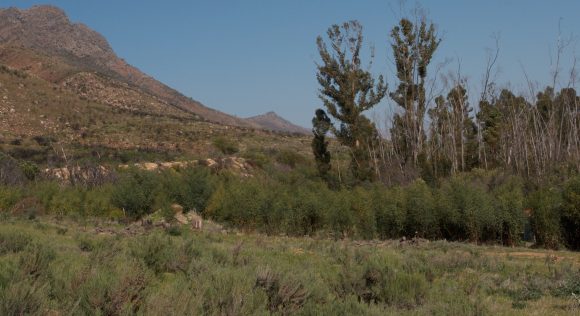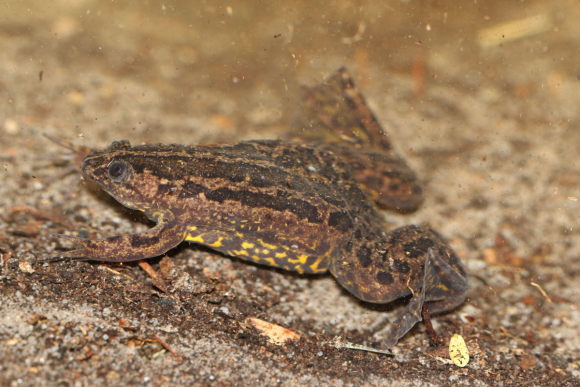4 June 2018 | By Jeremy Shelton
A new study, led by C·I·B post-doctoral fellow Jeremy Shelton, has shown that water temperature plays a role in the impacts that an introduced fish has on native fishes.
During the last century, non-native Rainbow trout (Oncorhynchus mykiss) has invaded many headwater streams in South Africa’s Cape Fold Ecoregion (CFE). This aggressive, cold-water species has serious negative impacts on rivers systems and threatens the survival of small-bodied native fish species in the region. The impact of trout in CFE streams depends to large degree on the number of fish per unit area of river (population density), which may be controlled by several environmental factors including temperature and water quality.
In their study, Shelton and colleagues collected data on water temperature, and surveyed fish in headwater streams of the Berg and Breede River systems, to determine whether temperature plays a role in trout density and, as a result, in their impacts on native fish.
Results showed that temperature influenced the impact of trout on native fish abundance, in that the strongest impacts were recorded where water temperature remains low throughout the year (and trout density correspondingly high), while weaker impacts were seen where high temperatures occur during the warmer summer months (and trout density was correspondingly low, or even absent).
Shelton adds “Climatic warming may have a positive spin-off for CFE native fishes by reducing trout density and distribution, but it also may increase the potential for invasions by other non-native fish that are adapted to warmer conditions and that are already present in headwater streams of the CFE”.
The study was recently published in the journal Biological Invasions.
The full article can be read at: Shelton, J.M., Weyl, O.L.F., Esler, K.J., Paxton, B.R., Impson, D.N. and Dallas, H.F. Temperature mediates the impact of non-native rainbow trout on native freshwater fishes in South Africa’s Cape Fold Ecoregion. Biological Invasions (2018). https://doi.org/10.1007/s10530-018-1747-7
For more information, contact Jeremy Shelton at jeremy@frcsa.org.za




